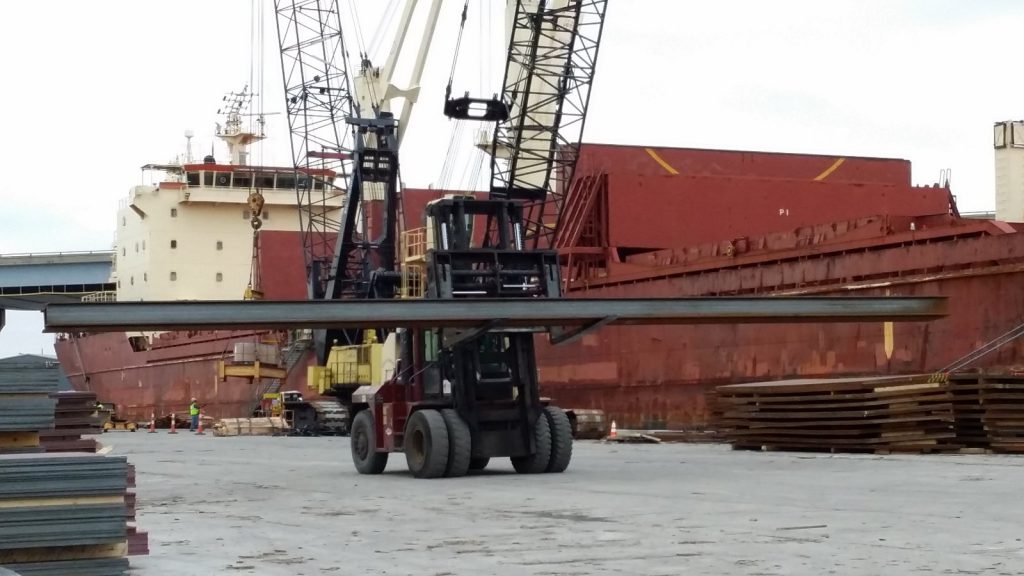Great Lakes Ports Tracking Gas Emissions
One-third of U.S. and Canadian ports, including Milwaukee, now track their greenhouse gas impact.
A recent report finds around one-third of participating ports in the United States and Canada are keeping a detailed inventory of greenhouse gas emissions. The results are part of the Green Marine environmental certification program.
The voluntary program was formed in 2007 for the Great Lakes and St. Lawrence Seaway, according to West Coast program manager Eleanor Kirtley. The program has seen a 12-percent increase in the number of participants that include ship owners, shipyards and port authorities.
Kirtley said the program’s overall mission is to advance environmental excellence among its 133 participants, which include ports in Duluth and Milwaukee.
“We focus on continual self-improvement,” said Kirtley.
The participants conduct self-evaluations that are verified by a third party regarding their performance on efforts to reduce the risk of invasive species, greenhouse gas emissions, spills, waste and cargo losses. They rated their performance from levels 1 through 5. Lower levels represent monitoring of regulations and best practices and higher levels reflect the incorporation of new technologies and excellence in leadership.
The Duluth Seaway Port Authority, which manages facilities at the largest port on the Great Lakes, maintained a rating of level 4 or higher on areas like minimizing spills, cargo losses and environmental leadership. Jeff Stollenwerk, the port authority’s government and environmental affairs director, said they’ll be improving in areas like waste management and greenhouse gas tracking.
In 2016, the port authority’s self-evaluation found it produced around 907 metric tons of carbon dioxide. In 2017, it showed around 430 metric tons of carbon dioxide emissions were produced while 539 metric tons of emissions were shown in 2018. However, Stollenwerk noted the self-evaluations didn’t include a complete inventory of the port authority’s emissions in the last two years of reporting.
He said changes in criteria for emissions designed to improve environmental performance caused the port authority to dip from a level 5 to a level 3 last year. A level 4 indicates a detailed inventory of greenhouse gas emissions.
“The program really pushes us and challenges us to reduce our environmental footprint, and it’s something that goes above and beyond regulation,” said Stollenwerk. “It’s just about doing the right thing as a port.”
He noted the level of activity and business conducted at the port plays a role in the variability of emissions each year. In the future, he said, they will track other forms of emissions in addition to carbon dioxide, such as methane and nitrous oxide.
Port Milwaukee, the program’s only participating port in Wisconsin, has also been improving its environmental leadership and taking more inventory of emissions produced by their equipment and buildings over the last several years, according to Brian Kasprzyk, field engineer for Port Milwaukee. He said there’s always room to grow.
“We still need to do some work as far as documentation and some policies and actually getting it in writing,” he said. “A lot of the stuff we communicate verbally with our tenants.”
Port Milwaukee maintained a level 3 status on environmental leadership and greenhouse gas emissions, according to the report. Kasprzyk said the port’s self-evaluation showed it produced 77.9 metric tons of carbon dioxide in 2018 — a slight increase from the 77.2 metric tons produced in 2017. He noted the increased emissions may have been a result of a colder winter, higher staffing levels and increased activity with equipment at the port.
“We pride ourselves on being stewards of the environment,” said Kasprzyk. “We do our best to, as a port authority, comply with all regulations and go above and beyond.”
Port and Seaway participants showed the greatest improvement in 2018, according to the report. The report said results among ship owners on efforts to reduce the risk of aquatic invasive species indicate “greater feasibility of ballast water treatment systems within the marketplace.” The findings showed seven of 18 ship owners were using a treatment system on one or more vessels.
Listen to the WPR report here.
Great Lakes Ports Seek To Improve Tracking Of Greenhouse Gas Emissions was originally published by Wisconsin Public Radio.




















Slightly off base question about the Port of Milwaukee and MMSD:
Regarding the Port, is this just measuring the smoke from the ship’s stacks and truck exhausts? How else can greenhouse gasses be measured? Is there a continuous “sniffing” device that can monitor CO2? Methane? Particulate material?
Regarding MMSD, flushed paper breaks down into particles of carbon from the cellulose, and other stuff. Does Milwaukee sewage sludge just get dried and all made into Milorganie, or dumped into a landfull, minus the filtered out toxic chemical-laden sludge. Is any of it discharged into the Lake to settle in the muck & sandy bottom?
I’m interested in how this effects our Rivers Lake transition zone and production of greenhouse gases.